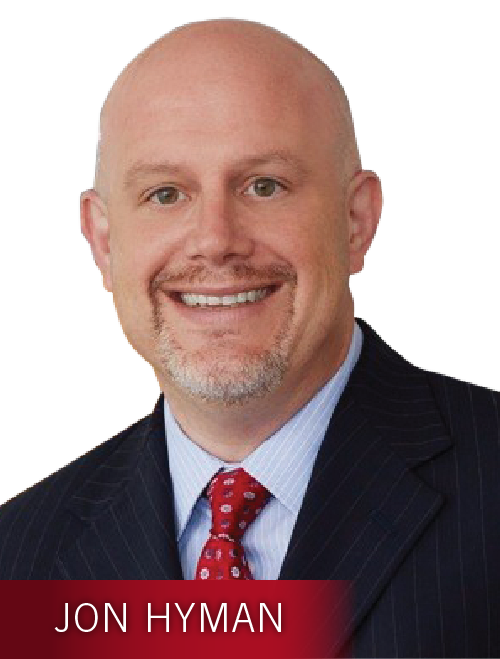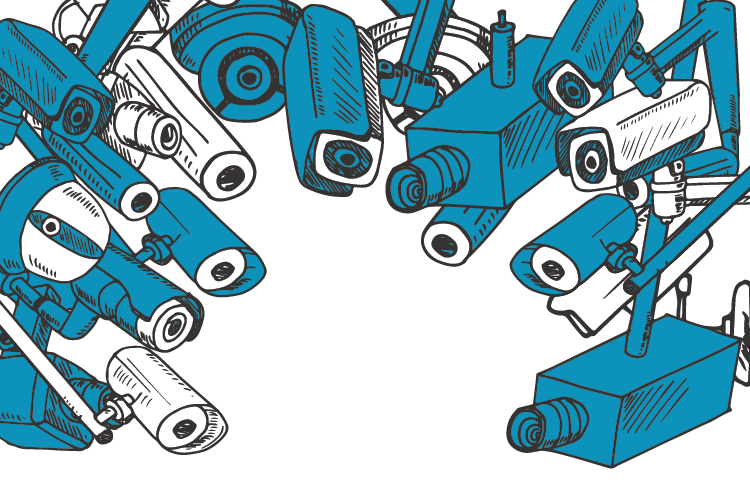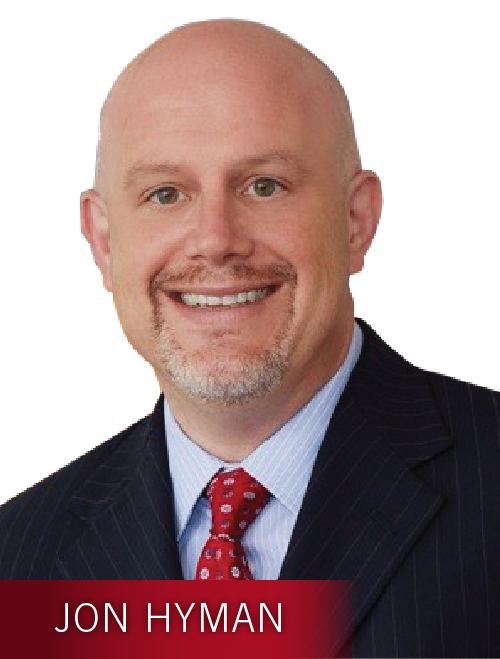In August 2017, Patrick McMullan and more than 50 of his employees had microchips inserted in their fingers live on NBC’s “Today Show.”
McMullan, the president of Three Square Market, a Wisconsin-based company that sells self-service break room vending machines, said it was one of the most exhilarating and nerve-wracking experiences of his life.
An employee who was to be chipped approached him 10 minutes before he was going on air and asked, “Should I do it today or not?” McMullan said “No,” to the employee’s surprise.
“If you’re asking me, it means you’re not certain about it,” he said. “And the answer is ‘No’ until you can be at peace that it’s something you want to do.”
Three Square Market received a lot of media attention after its chip party — both negative and positive, McMullan said — but in the past year Three Square proved that it’s possible to be forward-thinking with technology while also contemplating and respecting employees’ privacy.
“What that has done is inspired our employees to be far more innovative in finding solutions,” he said. “It’s helped all of our businesses in the past year. We’ve had a phenomenal 12 months.”
As more monitoring devices — phone or video recorders, wristbands, microchips, and wireless sensors that measure employees’ brain waves — are developed, and as these tools become more powerful, there’s greater potential for invading employees’ privacy.
Perceptions toward monitoring devices depend on what type of analysis is being done — an issue that becomes more complex as devices with elaborate capabilities enter the market, said Laurel McNall, associate professor at The College at Brockport, State University of New York. Her research interests revolve around employee attitudes, specifically around perceptions of fairness in the workplace.
“I do think there is a danger of setting up an electronic sweatshop,” McNall said.
What once appeared a dystopian, futuristic theory is a reality, at least from a technology perspective.
It would be naive to believe that companies will curb their use of monitoring devices that they think will improve business. But it would also be naive to assume that there aren’t organizations or managers that would take advantage of surveillance technology — and the lack of oversight — and cross a line when monitoring employees. In many cases workers are stuck in the middle, feeling as if they don’t have a choice in the matter or any sense of privacy at work.
As employers face the scattered legal landscape of employee monitoring and the often-skeptical reaction of their employees — Three Square Market workers notwithstanding — they must tread carefully and respectfully to find success.
Employee Comfort Levels Toward Monitoring
 Most employees find it unacceptable to monitor personal, non-work-related activities, according to a 2018 survey conducted by the HR Metrics & Analytics Summit, “Workplace Privacy & Protection: Is Your Employer Watching Your Every Move?” It’s inappropriate to monitor physical movements around the workplace, for example through wearable technology such as a Fitbit, said 57 percent of employee respondents, while 56 percent said it’s inappropriate to monitor personal interactions with these devices.
Most employees find it unacceptable to monitor personal, non-work-related activities, according to a 2018 survey conducted by the HR Metrics & Analytics Summit, “Workplace Privacy & Protection: Is Your Employer Watching Your Every Move?” It’s inappropriate to monitor physical movements around the workplace, for example through wearable technology such as a Fitbit, said 57 percent of employee respondents, while 56 percent said it’s inappropriate to monitor personal interactions with these devices.
The survey also found that 48 percent of employees don’t trust their company to protect their data.
Contextual factors are important in how employees will likely react to monitoring, said Dave Tomczak, an industrial-organizational psychology doctoral student at George Washington University who researches electronic monitoring in organizations. One of his most recent studies analyzed workers with highly complex jobs requiring a lot of creativity and whether they respond the same way as employees with less autonomy in their role.
“When someone has a flexible job, they expect the organization is going to give them the discretion to carry out their work,” he said. “Some of these people will see monitoring as hindering their ability to do their job. They perceive less autonomy in their day-to-day operations.”
It has the opposite effect on people with low-complexity jobs, like cashiering, he added, where it’s more likely that people will feel as though it helps them perform better.
“When monitoring gets in the way of people doing their jobs, that’s where the problems come in,” he said.
People find monitoring that is close to the body — for example, devices underneath employees’ desks that sense body heat to tell how long employees are away from their desks — as the most invasive, he added.
Tomczak’s adviser, Tara Behrend, associate professor of I-O psychology at George Washington University and an expert on privacy and ethical implications of workplace monitoring, said that not all surveillance is equal, and not all people respond similarly to it.
“Talking about what those variables are that make the difference is really critical,” she said. “We don’t want to give into hysteria, we also don’t want to ignore the potential dangers of doing this the wrong way.”
Three Square Market has tried to keep a healthy balance between taking advantage of the new chip technology while respecting the boundaries of some employees, McMullan said.
The radio-frequency identification, or RFID, chips that were implanted don’t track employees’ movements or location but do store data that allows employees to open doors, unlock computers and make payments. The next iteration of this chip technology will store medical and health data, and Three Square is conducting beta testing on that technology. Religious and privacy concerns are two major reasons employees express disinterest, McMullan said, and such objections can’t be ignored.
“Our mission is not to tell people to go get chipped,” he said, adding that one of his key staff members is adamantly against it and keeps him in line.
“Having that voice that said, ‘I’m not comfortable with this,’ has been one of the most valuable pieces because we’re in constant communication, talking back and forth, how would you do this?” McMullan said.
The Privacy Legal Landscape in the U.S.
Policymakers are likely to face confusion on how to deal with the challenges that arise from emerging technology, according to the 2018 “Emerging Tech Trends Report,” written by Amy Webb, founder of The Future Today Institute. The report explores emerging technology trends that will likely impact business, government, education, media and society in coming years.
As this tension between privacy and security continues, the report states, both large tech companies and small tech startups could face problems with “rules and legislation that are either too restrictive or don’t acknowledge that science and tech are in constant motion.”
While this is the prediction, though, and while that might have some truth in Europe with the advent of GDPR — General Data Protection Regulation — the current landscape in the United States is relatively devoid of regulations.
There’s no federal law regarding employee privacy, and if there are any rules, they’re on a state-by-state basis, said employment law attorney Jeffrey Dretler, partner at the Boston office of law firm Fisher Phillips. The closest federal law is the Electronic Communications Privacy Act of 1986. While the act protects wire, oral and electronic communications in transit, it does not protect privacy and was not intended as a privacy protection regulation.
Across the country, if an organization gets an employee’s consent, especially in writing, it can monitor anything. When there’s no consent, that’s where employers run into risks.
Many states have two-party consent laws, meaning both parties have to agree, while others have single-party consent laws, in which an employer could essentially monitor without notifying employees. Still, Dretler advises that best practices dictate that employers get consent no matter the state they’re in.
“It’s not always necessary to get consent, but it’s better to because it insulates the employer from potential cause of action an employee might try to bring,” he said.
Certain states have created explicit laws for specific types of monitoring. States including California, Missouri and North Dakota have passed laws prohibiting the use of microchips, while Illinois and Washington state have protections on employees’ biometric data.
“As tech advances, certainly states pass laws regulating what can and can’t be done,” he said. “But for the most part, the laws focus on informing employees of what the company wants to do, informing employees on how the data will be used and getting employees’ consent for it. They’re not express prohibitions. The prohibition is on doing it without telling anybody or doing it without consent.”
This poses a challenge for privacy-concerned employees, who can’t bring a claim saying they want to work at a company but not have their data collected. The idea is that, as long as an employer tells a potential employee what it intends to monitor, the employee can agree and work there or not agree and find another job.
“As more and more companies start to collect and use this kind of data it becomes harder and harder for employees to find a place to work that doesn’t do it,” Dretler said.
Best Practices for Employee Monitoring
Just like the technology itself will continue to advance, ethical concerns among employees also will increase. Organizational psychologist McNall said there are steps an organization can take to reduce this idea of an electronic sweatshop.
Psychologists are interested in people’s emotional needs and how to develop a workplace environment that meets those needs, said McNall, who studies employee attitudes specifically around perceptions of fairness in the workplace. Two major needs are autonomy — the ability to have freedom and independence over how to do something — and competency — the ability to do something successfully or efficiently.
Technology is supposed to help employees be more productive at their jobs, thus increasing their competence. But they still want autonomy at work, McNall said.
“Autonomy is at risk; competence potentially could be enhanced,” she said. “How do you help make people feel like they’re still autonomous, that they still have some degree of control?”
Employers can provide that independence by giving employees the ability to turn the monitoring on and off in a protected space in the office, which helps deter feelings of invaded privacy. The caveat is that employees often need to take home and use some tracking devices — like wearables to count steps or track health data — so there may not be a truly protected time or space for employees to disconnect.
Employers can also be smart about communicating the technology, how it works and its ultimate purpose, she said. The decision to monitor employees requires thoughtfulness and strategy, and organizations should not track for the sake of tracking but because it brings value to both the employer and employee. Employees should know that the potential value is for them.
“Make sure you spend time,” she said. “Be intentional and deliberate in how you word it. Have an adequate, well-thought-out explanation.”
Employers should tell employees what they plan to do with their data and give them a voice in the process, allowing them some level of participation, George Washington University’s Tomczak said. If employers aren’t giving their workforce this information, employees may be skeptical about what’s going on in the background.
“If it’s not transparent, if it’s not feedback-based, then it’s authoritarian,” he said.
McNall also emphasized the importance of building this trust. Although monitoring technology is itself neutral, there’s potential for of privacy invasion and lack of fairness.
“There’s no way monitoring is going away,” she said. “So how can we take an issue like that — this is reality; this is where we are right now — and still make the workplace a better place using science?”
Andie Burjek is a Workforce associate editor. Comment below or email editors@workforce.com.







 People should take responsibility for their own health, but adopting the perfect heath behaviors in every aspect of our lives is impossible. Every person, regardless of their health status, drives health care costs.
People should take responsibility for their own health, but adopting the perfect heath behaviors in every aspect of our lives is impossible. Every person, regardless of their health status, drives health care costs.






 Most employees find it unacceptable to monitor personal, non-work-related activities, according to a 2018 survey conducted by the HR Metrics & Analytics Summit, “Workplace Privacy & Protection: Is Your Employer Watching Your Every Move?” It’s inappropriate to monitor physical movements around the workplace, for example through wearable technology such as a Fitbit, said 57 percent of employee respondents, while 56 percent said it’s inappropriate to monitor personal interactions with these devices.
Most employees find it unacceptable to monitor personal, non-work-related activities, according to a 2018 survey conducted by the HR Metrics & Analytics Summit, “Workplace Privacy & Protection: Is Your Employer Watching Your Every Move?” It’s inappropriate to monitor physical movements around the workplace, for example through wearable technology such as a Fitbit, said 57 percent of employee respondents, while 56 percent said it’s inappropriate to monitor personal interactions with these devices. 


 Take this instance. Years ago, people would took paper surveys about their mental well-being. Am I depressed? Am I stressed?
Take this instance. Years ago, people would took paper surveys about their mental well-being. Am I depressed? Am I stressed?